Meet the Family Caregivers Featured in the RAISE Act Family Caregiving Advisory Council Initial Report to Congress
In support of the RAISE Family Caregiver Advisory Council’s initial report to Congress and the National Family Caregiving Strategy that will be developed over the coming year, the Administration for Community Living, The John A. Hartford Foundation, the National Alliance for Caregiving (NAC), and the National Academy for State Health Policy partnered to share the lived experience of family caregivers across the lifespan.
We invite you to meet some of America’s 53 million family caregivers and get a glimpse of their diversity as a population. They represent various ethnic, racial, and cultural backgrounds. They represent each one of us. They support older adults and people of all ages who live with disabilities who have a broad range of needs. They have varied relationships with the people they care for—they are siblings, spouses, parents, children, and families of choice.
Their stories are woven throughout the RAISE Family Caregiving Advisory Council's initial report to Congress, and in the videos linked below, some of them share a little bit about their experiences.
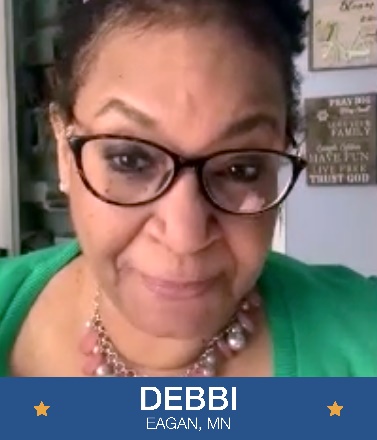
Debbi
Too often, the public—and even professionals—do not fully understand the role families play in helping people with disabilities maximize independence. They underestimate its complexity, the time and energy required, and the benefits of support. Debbi, who lives in Minnesota, is an example of a caregiver who has learned on the job to advocate for her son while at the same time educating providers about her role as a caregiver. Her efforts underscore how increased understanding and decreased bias can pave the way for a more holistic approach to connecting caregivers and people with disabilities with the services and supports they need. https://youtu.be/ArQT75GxnLI
 Leslie
Leslie
Family caregivers are often critical to ensuring that people who need assistance receive high quality care. However, for this to happen, it is important for providers to assess the caregiver’s needs, their concerns, and their comfort level with specific tasks. Les lives in Washington State. His story illustrates the value of culturally sensitive assessments to determine which services and supports will best enable them to balance the responsibilities of caregiving with addressing their own needs. https://youtu.be/YXJWOet7g5A

Jennifer M.
Helping families maintain their financial health is a core component of maintaining the caregivers’ well-being and is critical to meeting the overall goals of the person receiving support and caregiver. As a caregiver who left her career at a young age, Jennifer M., who lives in Florida, is an example of a caregiver at greater risk of impoverishment later in life. Her story demonstrates how, without early identification and assistance, family caregivers can easily spend down their own resources, leaving them at significant financial risk later in their own lives. https://youtu.be/mU8ygmdy2Qs
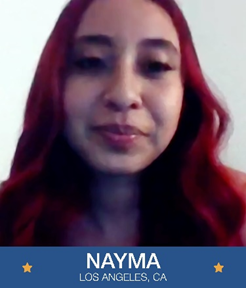
Nayma
Caregiving youth, like Nayma, often put their own lives on hold to support family members, but they frequently go unrecognized. As a sibling caregiver, she often misses time at work to perform caregiving tasks for both of her siblings and to support her parents. The adoption of policies that increase federal, state, and local recognition of caregivers, including sibling caregivers, and that offer flexible employee-centered workplace policies and practices that support work/life balance are just two examples of supports that can assist younger caregivers. https://youtu.be/VRDDTJL0VGI

Autumn
Young adult caregivers like Autumn are often overlooked by medical providers. Often, caregiving education materials and supports do not apply to their age demographic and needs. Autumn’s story highlights the value of adopting policies that include family caregivers (of all ages) in the care team and increasing access to culturally appropriate services and supports.https://youtu.be/rM0gUjUwUJE
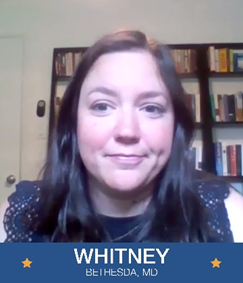
Whitney
Whitney, who lives in Maryland, experienced “high-intensity caregiving,” which is where the caregiver is providing many hours of care with little to no support. While she was able to maintain full-time employment while caregiving, she nonetheless struggled to meet her caregiving expenses. Because of her work, she did not qualify for caregiving support. Her story highlights just one of the many gaps in caregiver supports and services available for working families. It underscores the need for asset protection for all caregivers and the benefits of increasing the availability of counseling, training, and peer support to help them manage and navigate the financial instability associated with the caregiving experience.https://youtu.be/5MVu3nDVCAA

Tom
Tom, a Minnesota caregiver, is one of the 39 percent of family caregivers who identify as male. His story is an example of how important it is that caregivers, service providers, and healthcare professionals have access to a robust body of trusted, standardized, and evidence-based information about caregiving and how best to support family members. Without this body of work, many family caregivers, like Tom, have to make decisions based off their own best guess of what they feel is best for the person receiving support. To address this issue, the nation needs a national infrastructure of standardized information and best practices about family caregiving.https://youtu.be/pfbrGMOxwG0

Jennifer H.
Jennifer H.’s story illustrates the critical importance of supporting caregivers during emergencies. For example, the current pandemic has disproportionately affected family caregivers. Her story also serves as a reminder of the importance of training professionals to recognize caregivers and treat them and their family members with compassion and respect, as well as make appropriate referrals that can help them carry out their tasks in the best possible way.https://youtu.be/JTt11o2iizg

Gabe
Gabe, who is from Florida, is just one of an estimated 3.4 million child, tween, and teen caregivers in America. Many caregiving youth assist parents or other relatives who are also caregiving. That is why Gabe calls caregiving a “team sport.” That idea speaks to the importance of a holistic approach that values and recognizes caregivers of all ages by using culturally sensitive and age-appropriate strategies to identify and assist caregivers; when everyone works toward the same goal, the whole team wins. https://youtu.be/ib7vHOELasM

Katie
Individuals with I/DD have a civil right to support, to live and fully participate in their communities throughout their lives. Because of the role that families continue to play in the lives of their family members with I/DD, they must be included as part of the system of support. Yet, Katie’s story below is not unique—too many families of people with disabilities continue to be excluded from care discussions even when they will be an integral part of implementing the plan of care. Her story highlights both the importance of ensuring family caregivers are considered when policies and practices that affect beneficiaries are proposed and the need for increased availability of promising and evidence-informed practices to support family members of people with disabilities. https://youtu.be/DAUEZIhAbbQ

Jeannette
Jeannette, a post-911 military spousal caregiver, had to leave her job in order to provide her husband with the caregiving support he needed. Even in the presence of paid supports, she had trouble finding the assistance she needed. Her story is a reminder of the value of volunteers and volunteerism as a means of augmenting the support family caregivers provide and the importance of developing policies that enable caregivers to stay in the workforce and build a secure retirement. https://youtu.be/CQXNQ2N1iaQ

Sherry
Many people do not learn about caregiving until life circumstances change. This means that new caregivers often do not know what kinds of assistance would help them or where to start looking for assistance. Sherry, a working spouse caregiver, is an example of the importance of family caregiver assessments as a first step to developing a caregiver support plan and recommendations that support them to remain in the workforce, while also reducing the negative financial impacts that all too many caregivers experience. https://youtu.be/yD_-71dYMSE

Abena
Respite care provides short-term relief for primary caregivers. It can be just an afternoon off or a break that lasts for several days or weeks. Despite the well-documented value of respite, many family caregivers literally never get a break. This can be due to lack of awareness of respite options, the cost of respite, or even difficulty finding trusted providers. Abena’s story below underscores the importance of both early identification of caregivers and, once they are identified and assessed, connecting them to high-quality, setting-appropriate and caregiver-defined respite services. https://youtu.be/-VkJJjzE6ms

Melissa
Almost a quarter of family caregivers are caring for more than one person, an increasingly common phenomenon known as multiple caregiving. Melissa and caregivers like her, often juggle responsibilities and have to make hard choices about where to focus their attention, especially when travelling long distances to provide support. The council’s recommendations that caregivers—including secondary caregivers—be included in care coordination and its call to increase access to supportive services have the potential to make a big difference for this growing population of caregivers.https://youtu.be/etQZcIZiuPk

Shawn
For Shawn, a caregiver spouse of an injured veteran, making time for self-care is the key to continuing in her role as a caregiver. She, like many caregivers, struggles to find time for a healthy and meaningful break from her responsibilities. Her husband’s needs are so intense that even when someone is providing care in her absence, she feels she must remain accessible to assist if something unexpected happens. https://youtu.be/sujtPZnCbag

Sarah
In the midst of caregiving, it can be hard to find time to navigate differing eligibility requirements across multiple social service programs. This means that over time the administrative hurdles faced by family caregivers to secure needed social services and supports can become overwhelming, leading families to spend their own money securing assistance as care needs increase. That is why it is critical to ensure the impacts of policy and practices on family caregivers are studied and understood before changes are made in healthcare systems. https://youtu.be/v3hzzkCeUkE
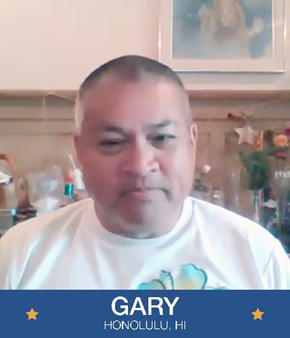
Gary
Caregivers who are forced to leave the workforce because of the high demands of caregiving are at greater risk of poverty later in life. As Gary’s story indicates, his wife’s early retirement “decimated her retirement and Social Security,” highlighting the need for policies that both ensure the needs of family caregivers are understood before changes are made in healthcare systems and decrease the negative financial impacts faced by family caregivers. https://youtu.be/hGyRguZGiCY

Rona
For family caregivers like Rona, who are nurturing and supporting children with developmental disabilities, caregiving is a lifelong event. With the persistent nature of day-to-day caregiving, there is little time for self-care or to plan for the future. Rona’s story illustrates the critical importance of ensuring family members have the opportunity to take meaningful breaks from their caregiving responsibilities.https://youtu.be/QjvGznpxN5o
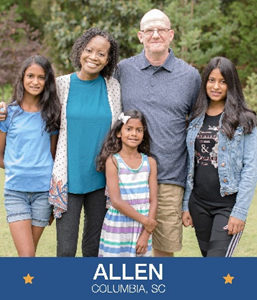
Allen
When caregivers are supported by a network of friends, neighbors, and community volunteers, they are better able to navigate the challenges of family caregiving. Not all caregivers have an established network of social support, like Allen did, however. This underscores the need to engage caregivers early in their caregiving journey through a caregiver assessment, the findings of which can be used to develop support plans that are culturally relevant, meaningful, and engaging. https://youtu.be/G6luD_PjKC8

Jim
Comprehensive family caregiver support programs like the one in which Jim and his wife participate, help ensure they are engaged and included in all relevant care coordination and transitions for their daughter, a veteran. For too many caregivers, this is not the case. Many family caregivers feel like bystanders, causing them to feel unprepared to meet their caregiving responsibilities.https://youtu.be/Q246qdaqxm0

